Galapagos Marine Reserve
The 2021 Glasgow COP26 environmental conference delivered fantastic news for Galapagos Marine Reserve conservationists. Not only will the Galapagos Marine Reserve increase significantly in size, it will also merge with other nearby reserves to create a new “mega” protected area. This is a huge win for the crown jewels of Ecuadorian tourism. The unique Galapagos landscapes and wildlife should now be protected for generations to come.
Keep Reading to find out what this change really means in practice. What will happen to the Galapagos Marine Reserve, and why is it a genuine reason for Blue-footed boobies, sharks, and whales & co to celebrate?
What is the Galapagos Marine Reserve?
The Galapagos Islands are the second largest marine reserve on the planet (after Australia's Great Barrier Reef), and an important protected haven for a host of endemic creatures. The impressive biodiversity of the Galapagos Marine Reserve (GMR) has led to recognition by both UNESCO World Natural Heritage and Blue Park Awards.
The Galapagos Marine Reserve was created by the Ecuadorian government back in 1998 to provide protection to the archipelago. The fragile Galapagos ecosystem faced threats from overfishing, population growth, and also from irresponsible tourism practices.
In total the existing marine reserve covers an expansive area of 133.000 square kilometers (51,352 square miles), providing a safe haven for both Galapagos land and marine species.
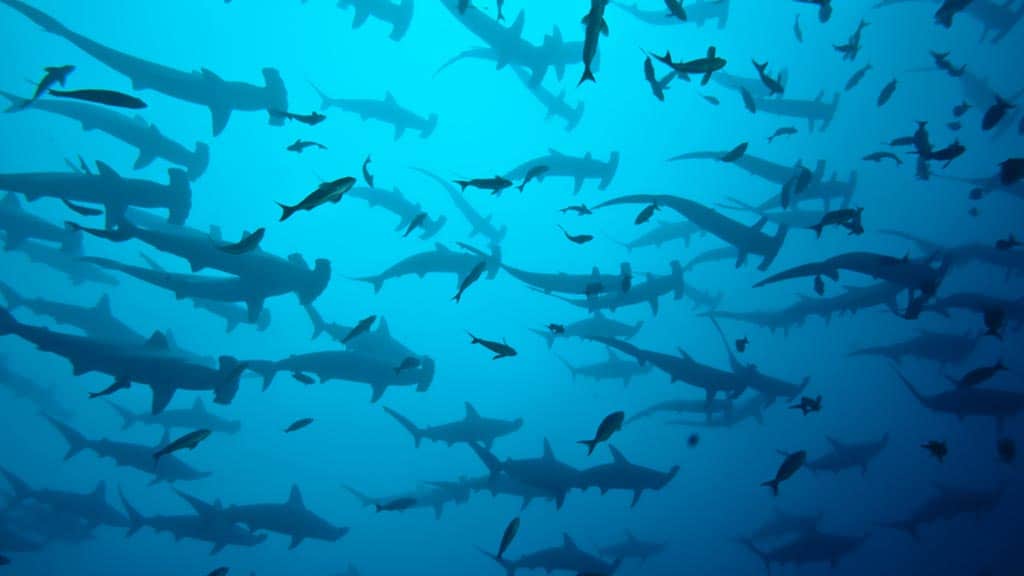
COP26 - What Big Change Was Announced For The Galapagos Marine Reserve?
In fact, not just one but two important changes for the Galapagos Marine Reserve were announced at COP26.
Firstly, Ecuador’s president, Guillermo Lasso, announced an expansion in size of the Galapagos Marine Reserve. An extra 60,000 sq km will be added, representing a 45% increase to the protected area.
The following day came even better news. Ecuador has joined forces with neighbors Colombia, Panama, and Costa Rica to combine various isolated marine reserves (including Galapagos) into one huge ‘Mega-Marine Protected Area’. This is a significant move, creating a safe corridor for migratory species, such as turtles, whales, and sharks.
Why is it Important to Make the Galapagos Marine Reserve Larger?
The Galapagos Islands support a very important and delicate ecosystem. Their location at the confluence of different marine currents generates a mix of cold and hot water, which attracts a great diversity of Pacific Ocean marine life to feed on rich plankton and other abundant food sources.
It’s not just ocean-faring species that rely on the islands for food and sanctuary. Important sea bird colonies also call the archipelago home, including the endangered waved albatross which only nest at one site on the planet (Espanola Island), and the Galapagos penguin – the only penguin species to inhabit the tropics.
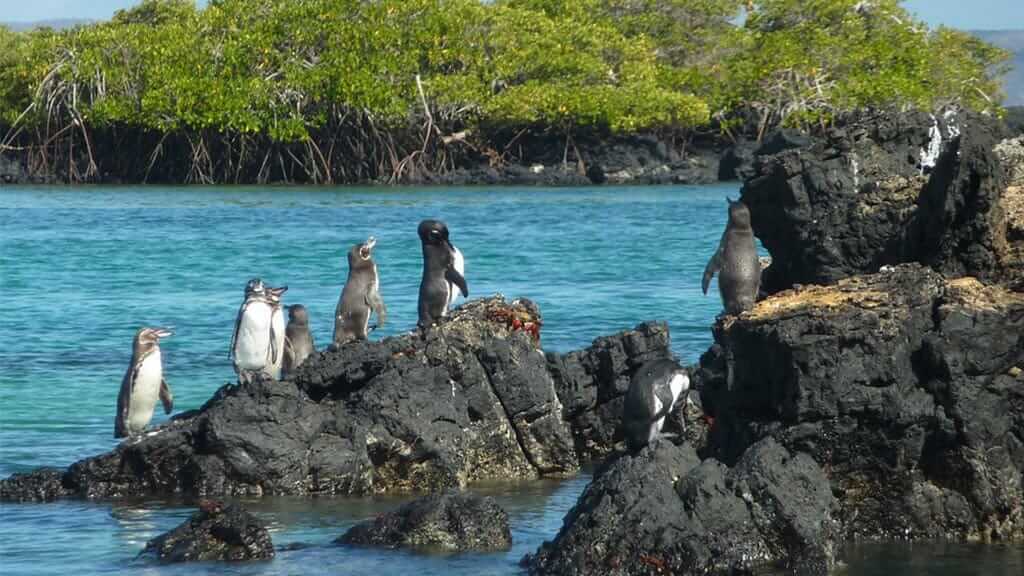
The Galapagos marine cycle is extremely delicate. Any break or stress in the food cycle and the system collapses, from plankton and microbes right up to ocean apex predators.
What is the biggest threat to the Galapagos Marine Reserve right now? Overfishing!
In August 2017 the Chinese fishing vessel Fu Yuan Yu Leng 999 was captured fishing illegally inside the boundaries of the marine reserve. Even more concerning was the discovery of over 6,600 dead sharks on board, including Scalloped Hammerheads. Whilst the captain and crew were arrested and sentenced to prison for 1 to 4 years, this incursion into the reserve rightly caused alarm in environmental circles.
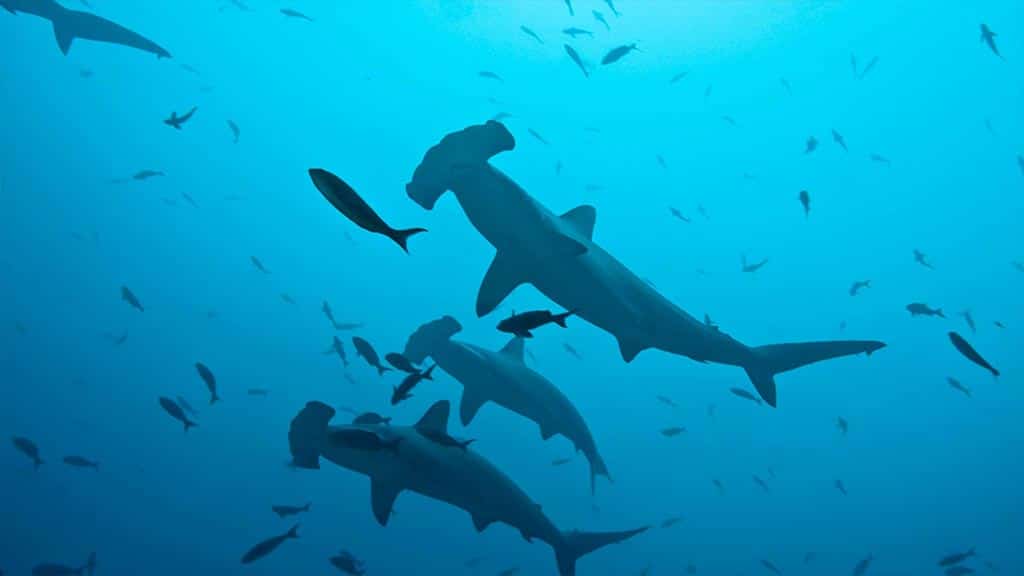
Fast forward to 2020 and a huge Chinese shipping fleet was closely monitored as they spent several months fishing the waters right along the borders of the Galapagos Marine Reserve. The potential impact of 300 large trawlers, each holding up to 1000 tons of catch was clear. Although no illegal incursions were made this time, the very size of the shipping fleet and their proximity to the protected reserve caused serious concern. The main target of the fleet was squid, a vital food source for sharks, whales, and sea birds in Galapagos.
To counter this threat of overfishing in the area, the expansion of the Galapagos Marine Reserve can be hailed as a success. A larger safety buffer results in improved protection.
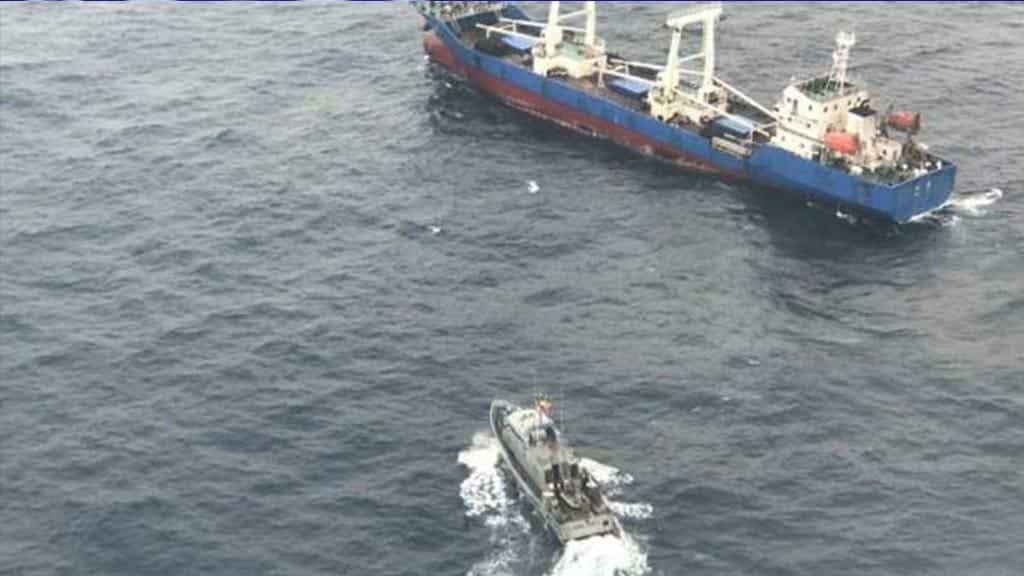
What is the Eastern Tropical Pacific Marine Corridor (CMAR)?
The Eastern Tropical Pacific Marine Corridor (CMAR) is a new fishing-free corridor in the Pacific Ocean, protecting waters from the Galapagos Marine Reserve all the way up the Cocos Ridge to Costa Rica.
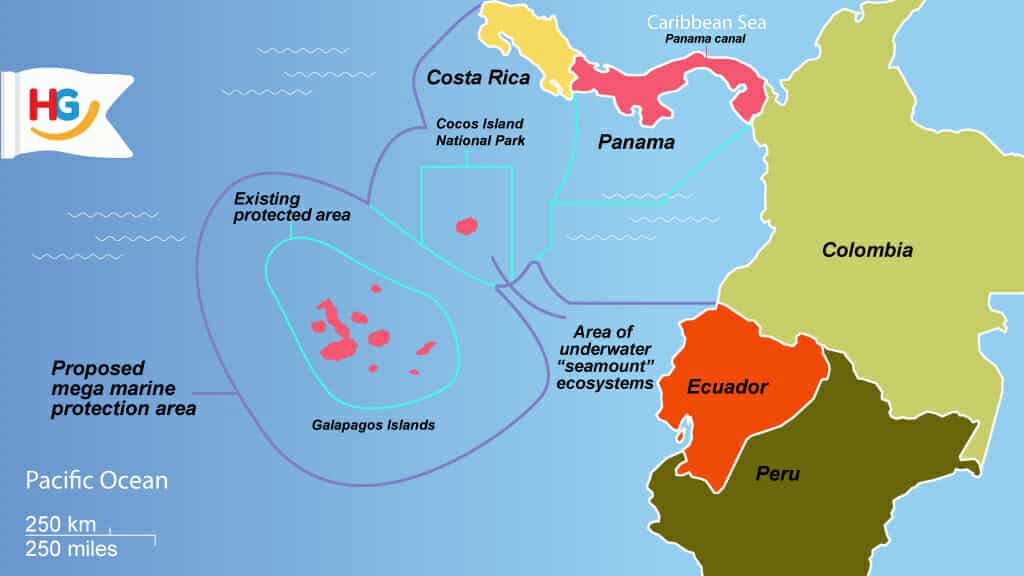
The corridor covers an area of over 500,000 sq km (200,000 sq miles). Its creation is especially significant because it covers one of the world’s most important migratory routes for whale sharks, hammerheads, sea turtles, Manta Rays, and much more.
Previously these species were safe only within the feeding grounds of the Galapagos Marine Reserve, but at risk when migrating to breed. Shipping fleets operating right on the borders of the protected Galapagos reserve could catch them as soon as they leave the reserve. Now, species will be able to migrate safely without risk of capture.
This is especially important when one considers the context that Galapagos waters around Wolf and Darwin islands boast the largest recorded shark biomass on the planet. If shark species cannot be successfully protected here, then where on the planet will they be safe?

Reaction to the COP26 Galapagos Marine Reserve News
It’s fair to say that these new far-reaching COP26 Galapagos announcements have been very well received right across the globe…
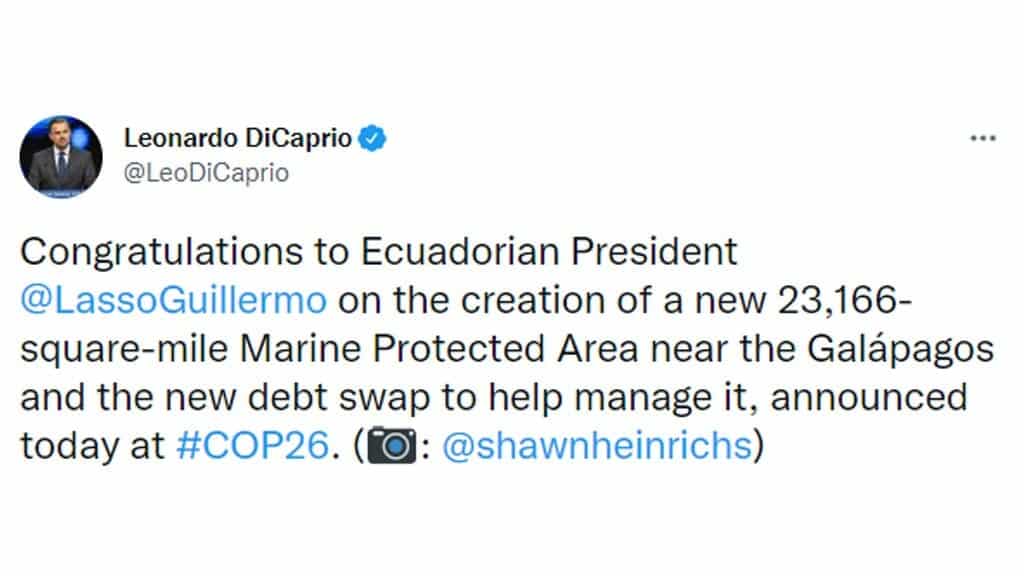
Photo taken from: Leonardo DiCaprio twitter
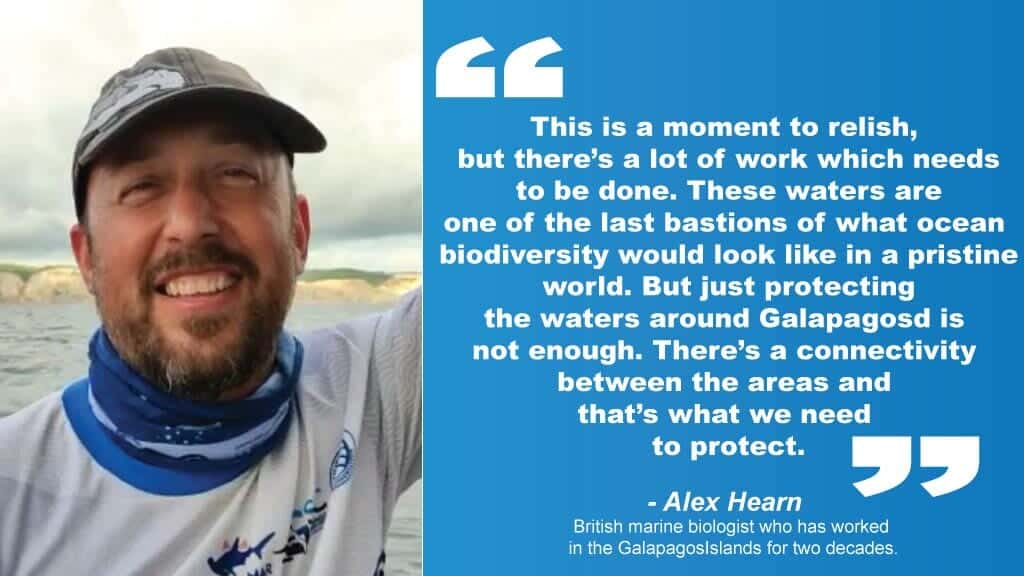
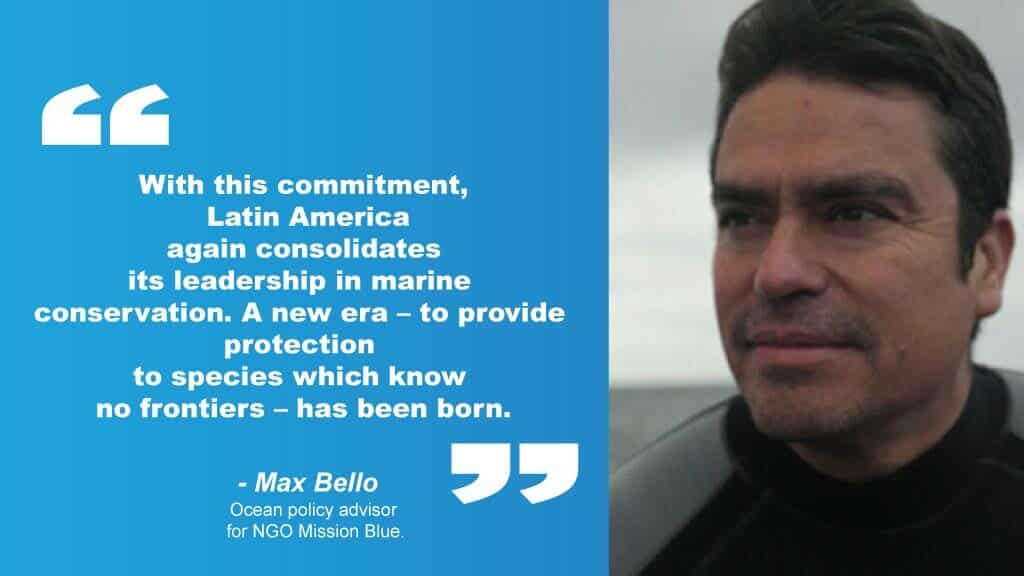

How Can Tourists Help to Save the Galapagos Islands?
While these changes to the Galapagos Marine Reserve and migration corridor are great first steps, plenty more work still needs to be done.
Illegal and irresponsible fishing is not the only threat to the fragile Galapagos ecosystem. Tourism also places unique strains on the islands. Yet tourism also brings hope, as summed up by Sir David Attenborough:
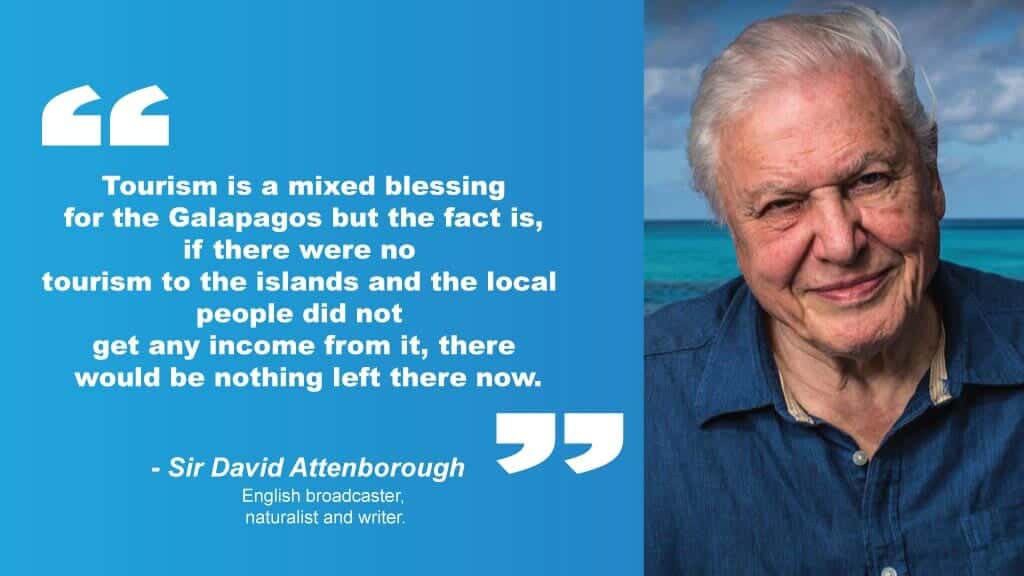
In other words, without tourism, the islands would have received zero protection, and locals who live there would have no incentive to preserve the habitat. Overfishing would long ago have depleted fish stocks, leaving no food for marine animals and seabird species. Removal of highland forests to convert into farmland would have destroyed the habitat for Giant Tortoises and Darwin’s Finches. More islands would no doubt be inhabited, and the ecological disaster would already be non-reversible.
Galapagos tourism can be a force for good if managed in a responsible and sustainable way. So, how can visitors get involved? And how can you minimize the environmental impact of your visit?
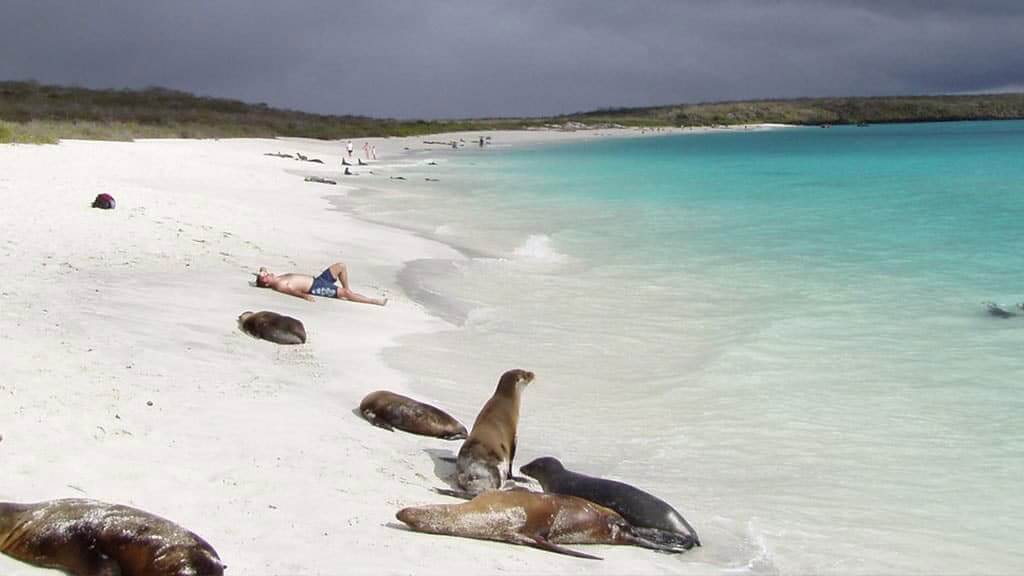
1. Be Responsible
Just by following the Galapagos National Park regulations, and respecting the wildlife and their home, tourists are already taking a positive first step. Take only photographs & memories, leave only footprints.
Another easy way to help is to avoid the use of plastics. In order to avoid plastic waste polluting Galapagos waters, the archipelago has been declared a plastic-free zone. Happy Gringo Travel set up a #HappyTravelsNoPlastic awareness campaign to support this initiative. In the words of founder John Potts:
“We designed metallic refillable water bottles that we gift to our Galapagos Land Tour clients, so they have no need for plastic bottles throughout their trip. All hotels and cruise yachts have a potable water supply, so tourists can easily fill up and go. The responsibility to create change belongs to each and every one of us, and can often start with simple and easy steps”.
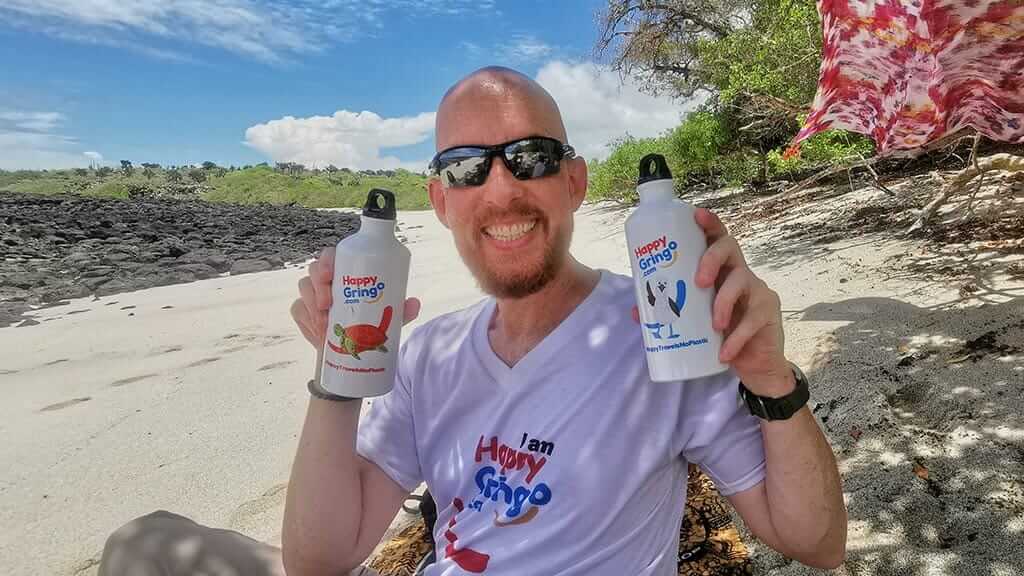
2. Donate
A great next step is to donate to a foundation dedicated to Galapagos conservation. The Charles Darwin Foundation and Galapagos Conservation Trust are great places to start. Both are heavily involved in excellent conservation projects to preserve habitat, protect flora and fauna, and undo human damage to pristine islands in the Galapagos Marine Reserve. Their Scientific research efforts also help us to better understand the migratory and breeding behaviors of endangered marine species.
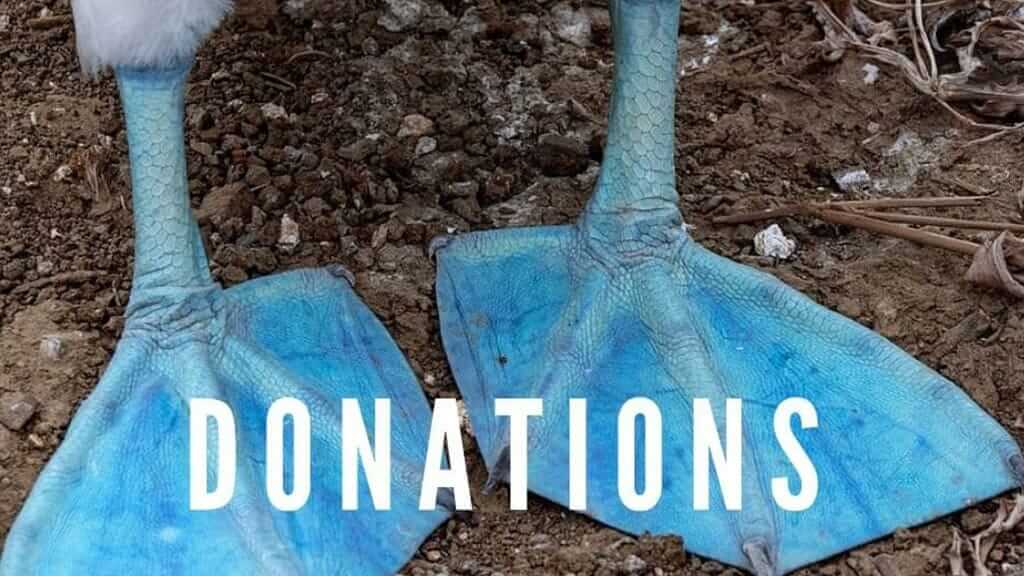
3. Spread the Word
Even if you don’t travel to the Galapagos Islands Marine Reserve yourself, it’s easy to share the good news from COP26. Tell friends and family about it, share on social media, or teach it to college students.
We are all responsible for the world we live in. Sharing positive news provides an example to world and community leaders. It can also inspire each and every one of us to be a force for good closer to home.
How to visit the Galapagos Marine Reserve?
Here are some tips for those who wish to experience the Galapagos Marine Reserve in person, and see conservation efforts firsthand.
Firstly, Galapagos is a great year-round travel destination, with pleasant weather all the time.
There are different ways to visit the islands:
For the most complete experience, take a Galapagos cruise. The cruise experience ticks all the boxes, visiting different islands to see as much wildlife as possible.
A Galapagos land tour is a great alternative, especially If you like to travel with freedom and flexibility to create your own adventures and do your own thing. We can even help you to custom-make your own unique trip itinerary.
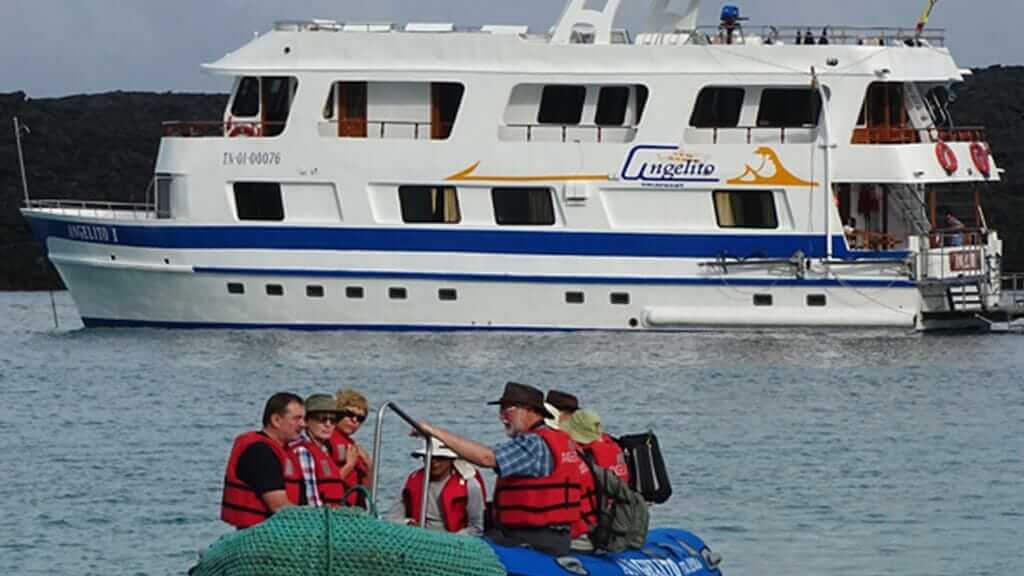
To explore the archipelago’s amazing underwater marine life, check out Galapagos scuba diving vacations. The marine reserve waters also boast incredible snorkeling opportunities.
There are even a few Galapagos resorts like Finch Bay Hotel, for an easy all-inclusive family vacation.
Contact us for a free tour quote. As well as the Galapagos islands, Happy Gringo specializes in trips right across Ecuador, the Amazon Rainforest and South America.
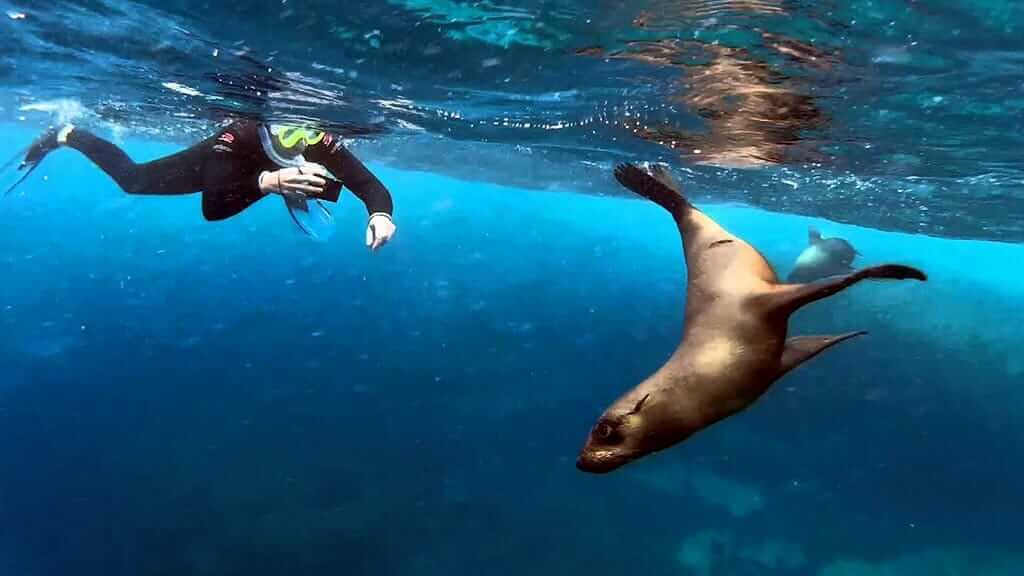
In conclusion, COP26 delivered excellent news for the Galapagos Islands & nature lovers across the globe. Not only are the protective boundaries of the Galapagos Marine Reserve expanding, but now species can also migrate safely without the risk of illegal fishing. Congratulations to Ecuador President Guillermo Lasso, as well as to leaders of Colombia, Panama, and Costa Rica; these new initiatives take Galapagos into a new era of environmental conservation, and set an example for the rest of the world to follow.



